Snakes are an essential part of the ecosystem, but when it comes to venomous species, a backyard encounter can be unsettling. The United States is home to several venomous snakes that, while typically non-aggressive, can pose serious risks if provoked. From the iconic rattlesnake to stealthy coral snakes, here’s a guide to the most venomous snakes you might come across in your own backyard.
1. Eastern Diamondback Rattlesnake: A Backyard Titan
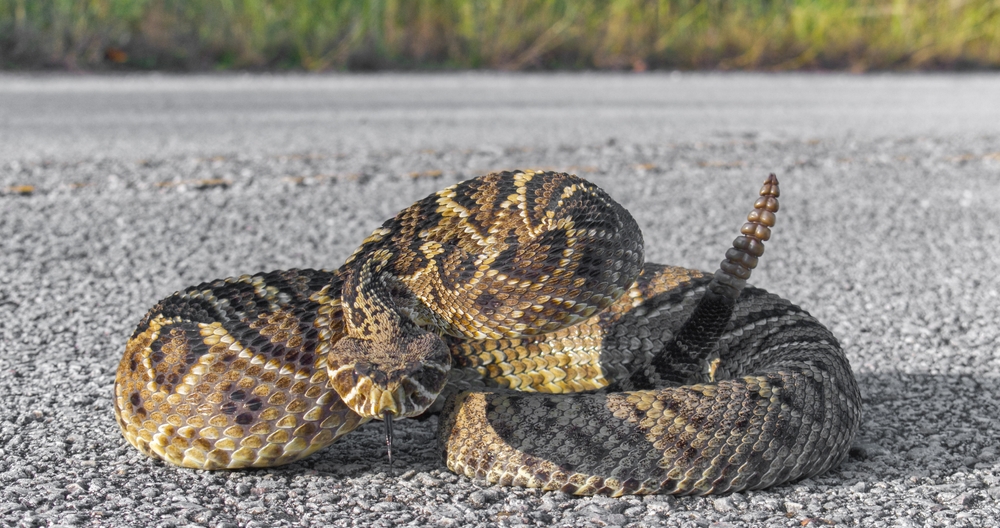
The Eastern diamondback rattlesnake is the largest venomous snake in North America and a common sight in the southeastern U.S. With its distinctive diamond-shaped patterns, it’s both beautiful and dangerous. Known for its potent venom, this snake delivers a bite that can be life-threatening if untreated. However, it’s not aggressive unless provoked, often relying on its iconic rattle to warn intruders to stay away.
2. Western Diamondback Rattlesnake: A Desert Dweller
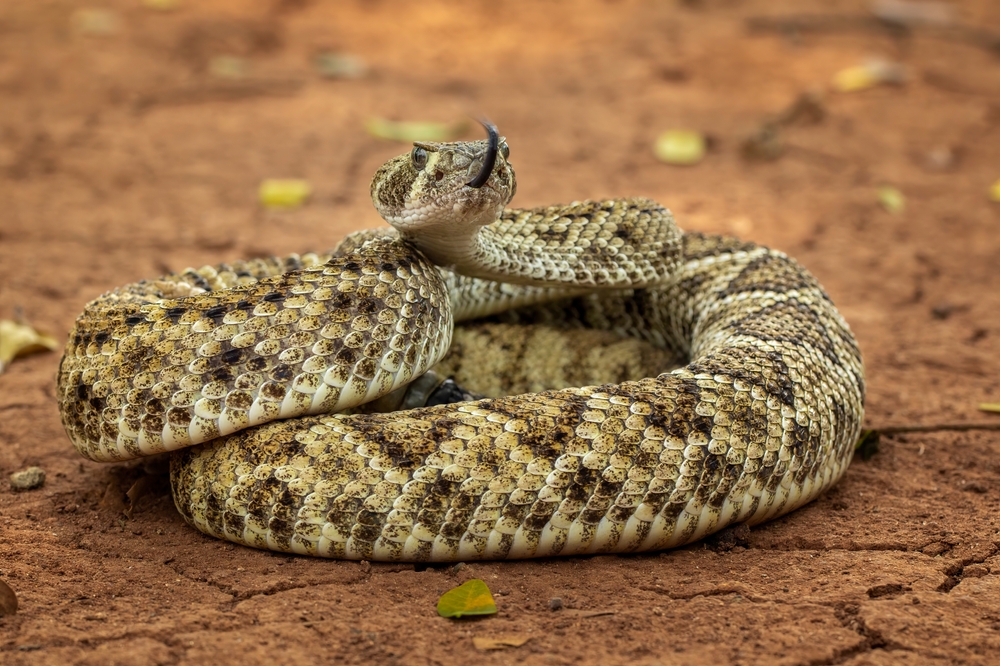
Found in the southwestern U.S., the Western diamondback rattlesnake is another highly venomous species that’s notorious for its defensive nature. Often spotted in arid regions or rocky terrains, it’s known for its distinctive black-and-white banded tail. Its venom contains a mix of toxins that affect both blood and tissue, making prompt medical attention essential after a bite.
3. Copperhead: The Master of Camouflage
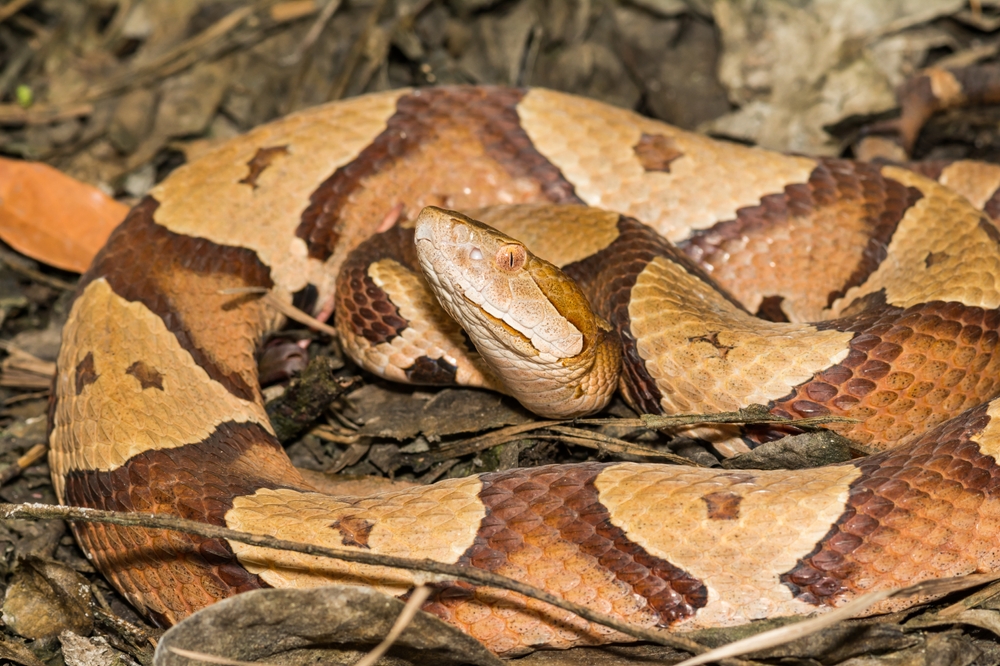
Copperheads are masters of blending in, their coppery, leaf-like patterns often making them difficult to spot in wooded or grassy areas. Found across the eastern and central U.S., these snakes are relatively mild-mannered but will strike if stepped on or threatened. While their venom is not as potent as some others, their bites are painful and require medical attention to avoid complications.
4. Cottonmouth (Water Moccasin): A Swamp Stalker
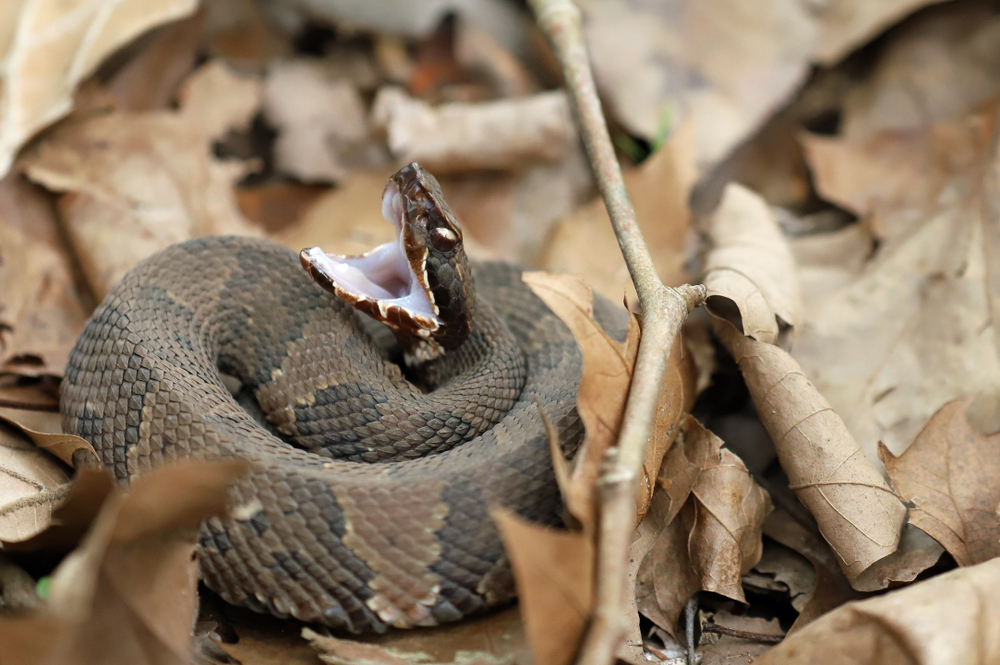
The cottonmouth, also known as the water moccasin, is a semi-aquatic snake commonly found in the southeastern U.S. Its name comes from the striking white interior of its mouth, which it displays as a warning. Known for its bold demeanor, this snake is highly venomous, and its bites can cause severe tissue damage. It’s most often encountered near water, so caution is key when hiking or fishing in its habitat.
5. Coral Snake: A Colorful Danger
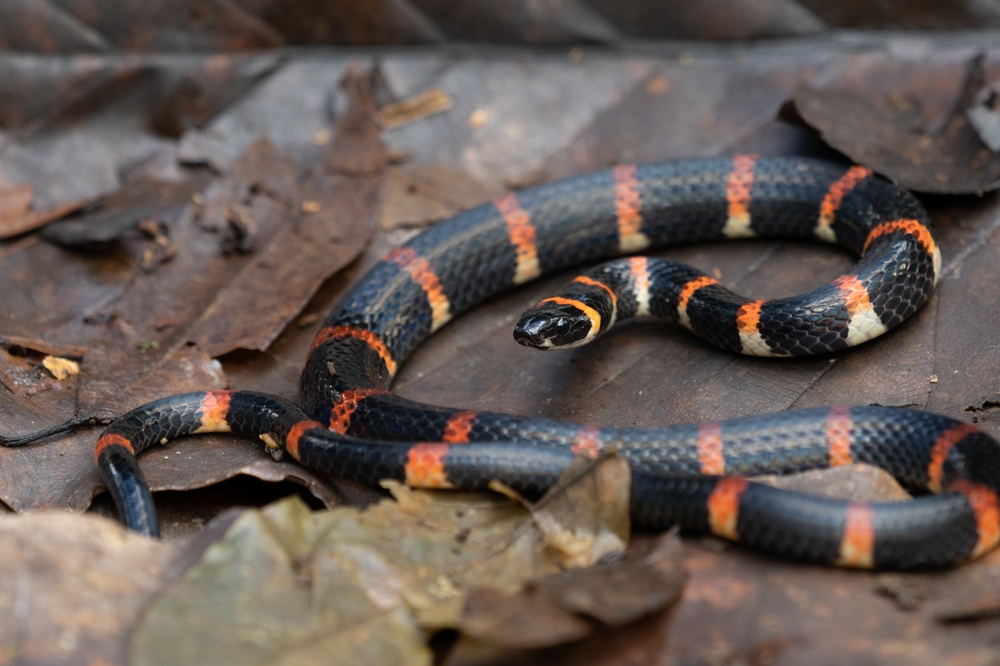
“Red touch yellow, kill a fellow”—this rhyme is a crucial way to identify the venomous coral snake. Found in the southeastern U.S., its vibrant red, yellow, and black bands make it both striking and deadly. Unlike pit vipers, coral snakes have neurotoxic venom, which can cause paralysis and respiratory failure if untreated. Despite its potency, coral snakes are shy and rarely bite unless handled or stepped on.
6. Timber Rattlesnake: A Forest Predator
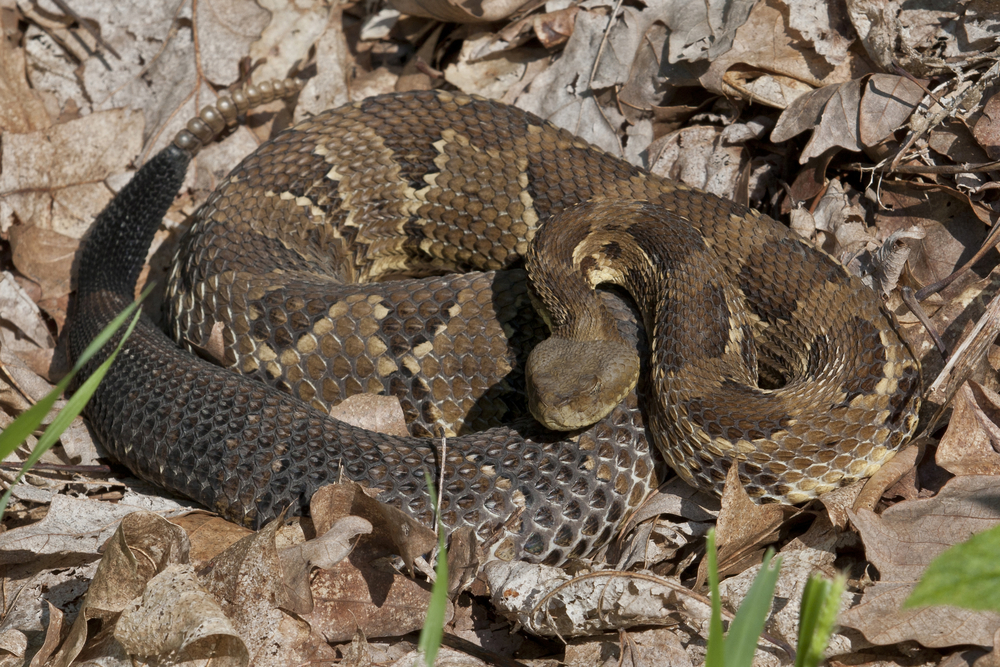
Timber rattlesnakes inhabit forests and rocky outcroppings across the eastern U.S., from the Appalachians to the Midwest. Known for their docile nature compared to other rattlesnakes, they still pack a venomous punch if threatened. Their venom contains hemotoxins that can cause severe pain and tissue damage, making them a snake to admire from a distance.
7. Mojave Rattlesnake: The Silent Striker
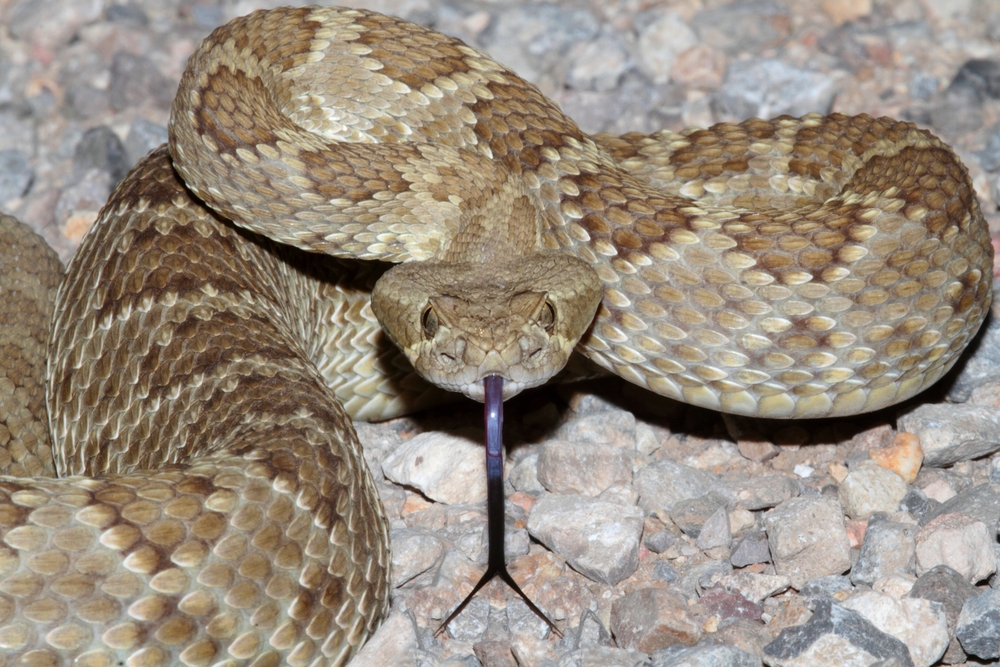
The Mojave rattlesnake, found in the arid deserts of the southwestern U.S., is considered one of the most venomous snakes in North America. Its venom contains both neurotoxins and hemotoxins, making its bite particularly dangerous. With its muted greenish tones, this snake blends into its environment, so keeping an eye out while hiking or working in desert landscapes is essential.
8. Pygmy Rattlesnake: Small but Mighty
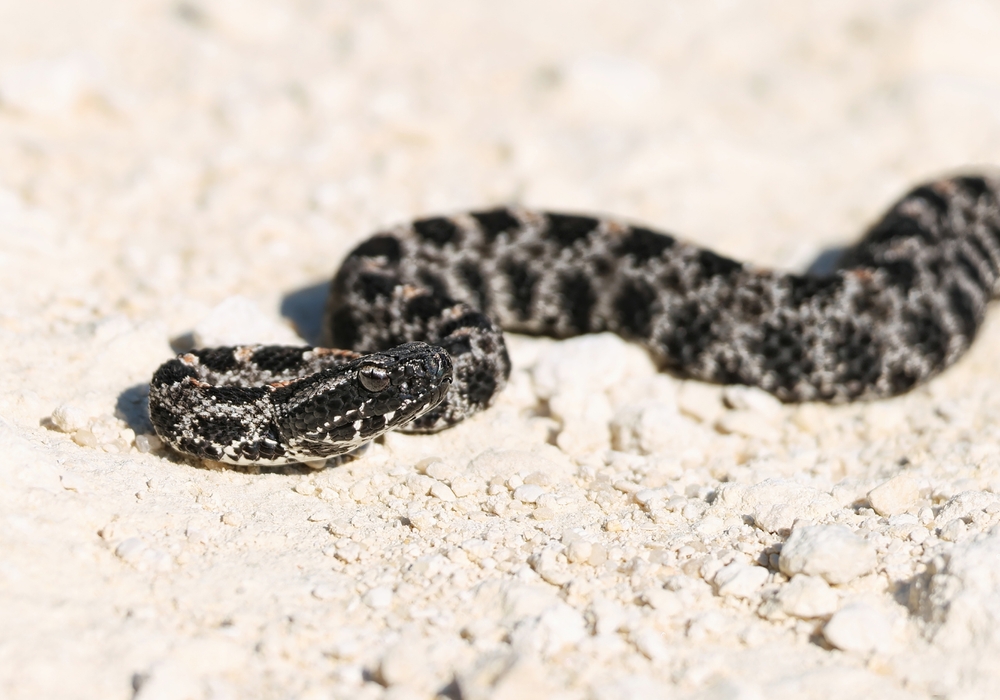
The pygmy rattlesnake may be one of the smallest rattlesnake species, but don’t let its size fool you. Found in the southeastern U.S., it’s often encountered in forests, wetlands, and backyards. Its venom, while not as potent as larger species, can still cause significant pain and swelling. The pygmy rattlesnake’s subtle rattle is barely audible, making close encounters more likely.
9. Western Coral Snake: A Desert Jewel
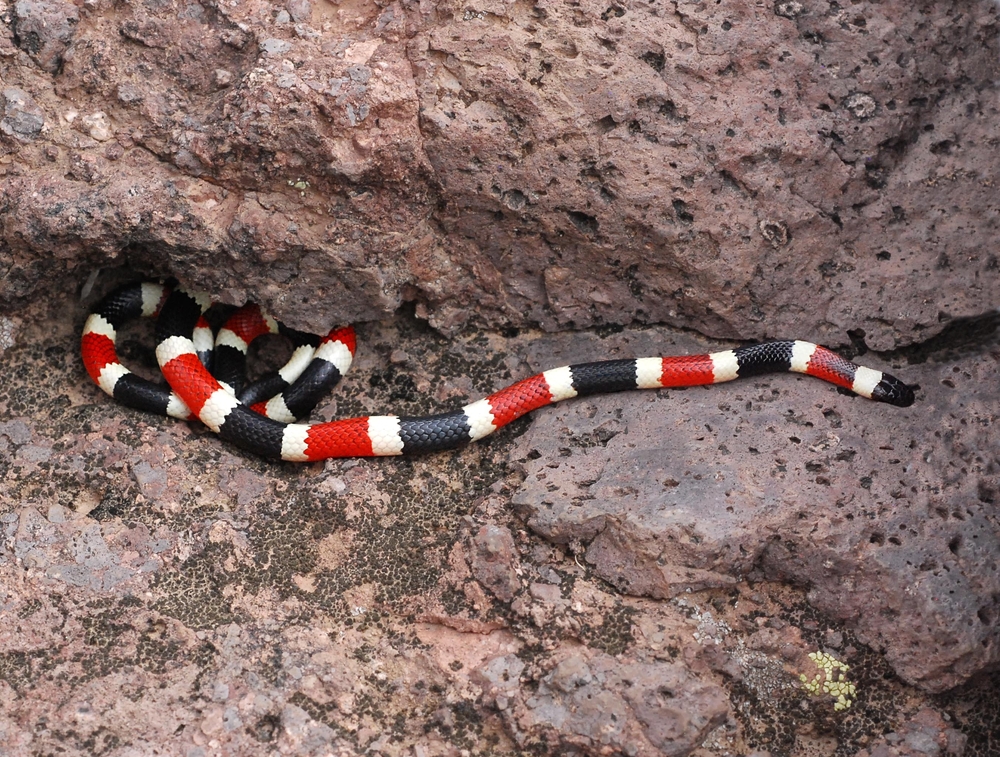
The Western coral snake, similar to its eastern cousin, sports bright red, yellow, and black bands that serve as a warning to potential threats. Found in the deserts of the southwestern U.S., its neurotoxic venom can be fatal if untreated. While rarely aggressive, the Western coral snake is best admired from a safe distance, as its bite delivers a serious punch despite its small size.
10. Prairie Rattlesnake: A Plains Predator
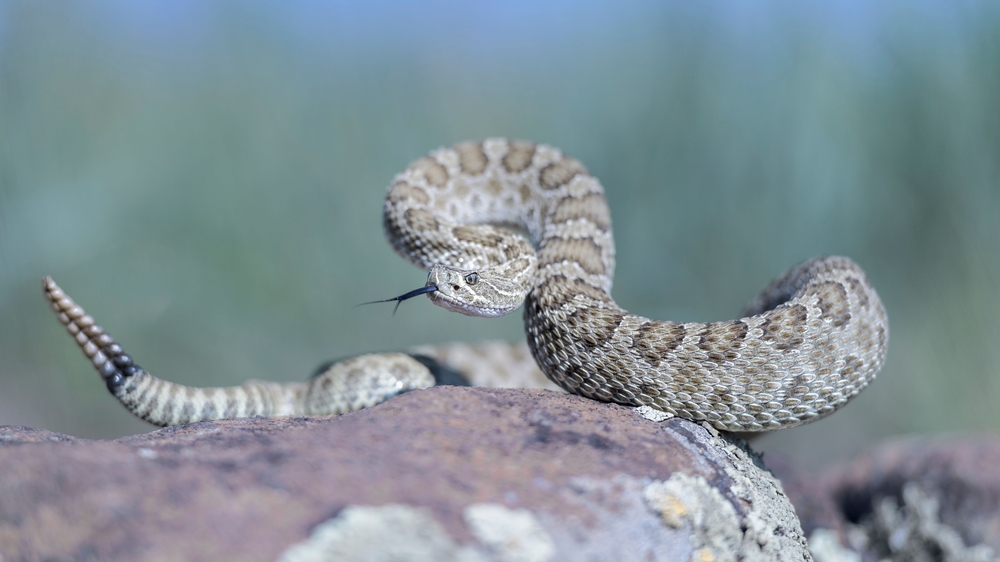
The prairie rattlesnake is a versatile species found across the western U.S., from the Rockies to the Great Plains. Preferring open fields and prairies, this snake can easily find its way into rural backyards. Its venom, which contains hemotoxins, causes severe pain and swelling. Known for its defensive nature, the prairie rattlesnake is quick to rattle and retreat when it feels threatened.
11. Eastern Massasauga: A Rare Encounter
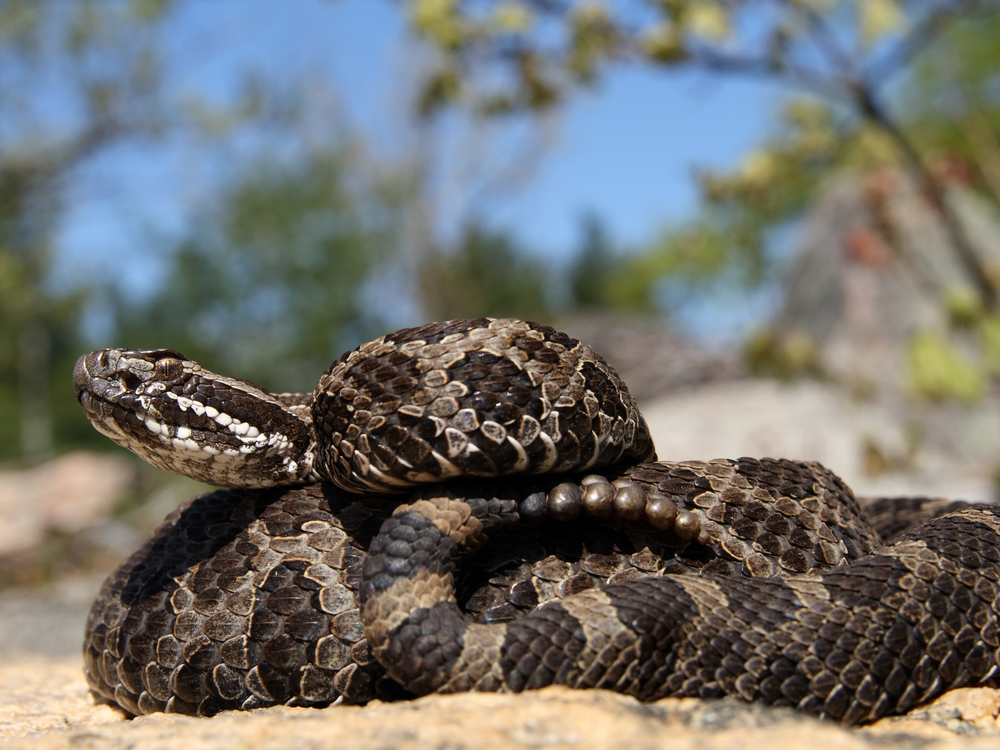
The Eastern massasauga rattlesnake, found in the Great Lakes region, is a smaller, less aggressive rattlesnake species. Often spotted near wetlands or grassy areas, it’s a secretive snake that avoids human interaction. Its venom can still cause serious symptoms, including swelling and tissue damage, so bites should always be treated with urgency.
12. Canebrake Rattlesnake: A Southern Icon
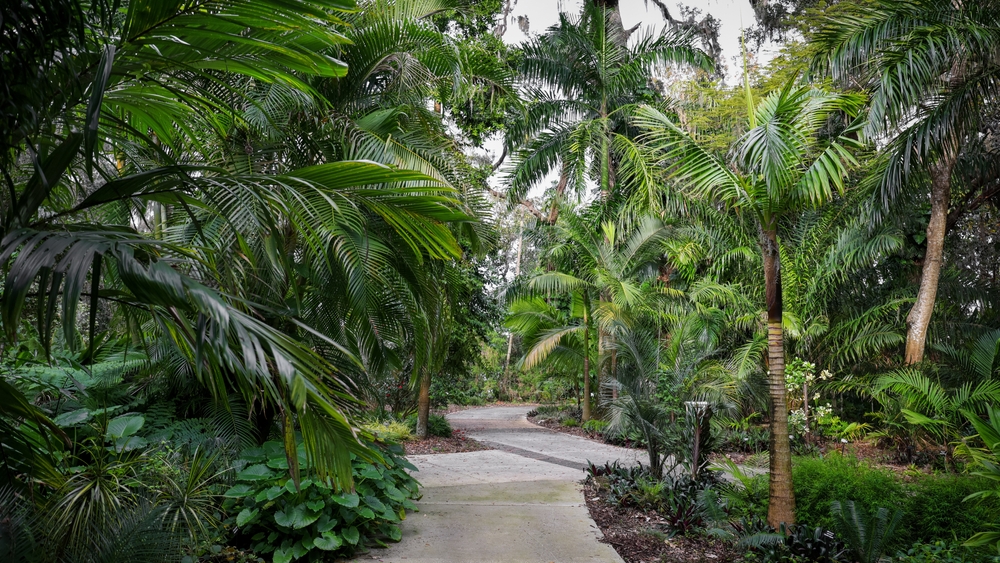
A subspecies of the timber rattlesnake, the canebrake rattlesnake is commonly found in the southeastern U.S. Its tan or pinkish hue makes it a striking sight, but it’s also one of the most venomous snakes in its range. Known for its potent hemotoxin, this rattlesnake is a powerful predator and a backyard visitor that demands respect and distance.
13. Sidewinder: A Desert Specialist
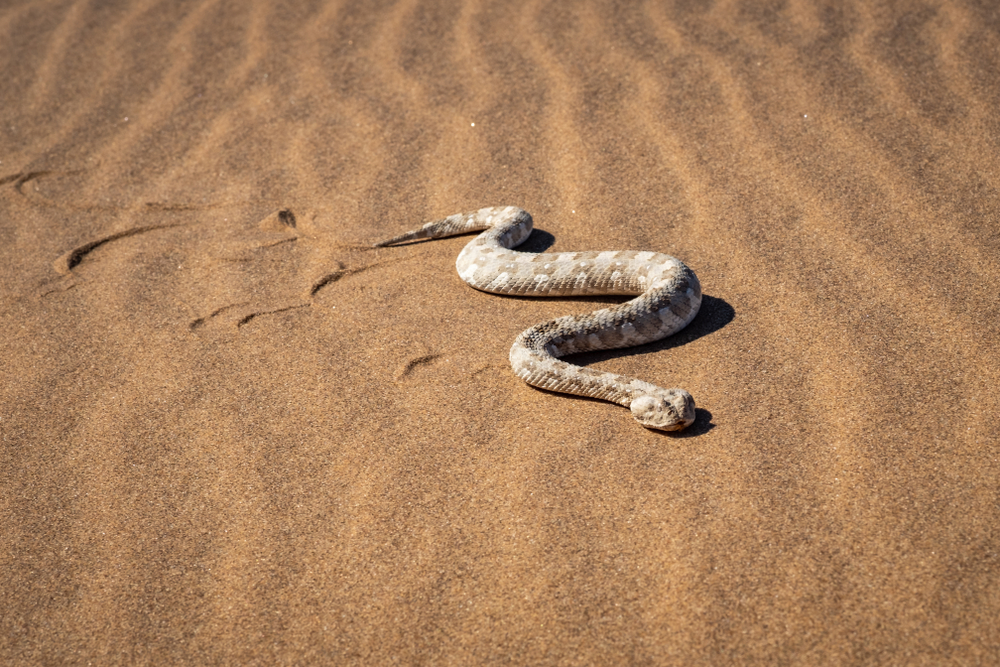
The sidewinder rattlesnake is famous for its unique, sideways movement across sandy terrain. Found in the deserts of the southwestern U.S., this small rattlesnake is well-camouflaged and quick to strike if threatened. Its venom is less potent than other rattlesnake species but can still cause significant pain and swelling. Sidewinders are often encountered in remote areas but can occasionally wander into suburban gardens near the desert.
14. Northern Pacific Rattlesnake: A Coastal Viper
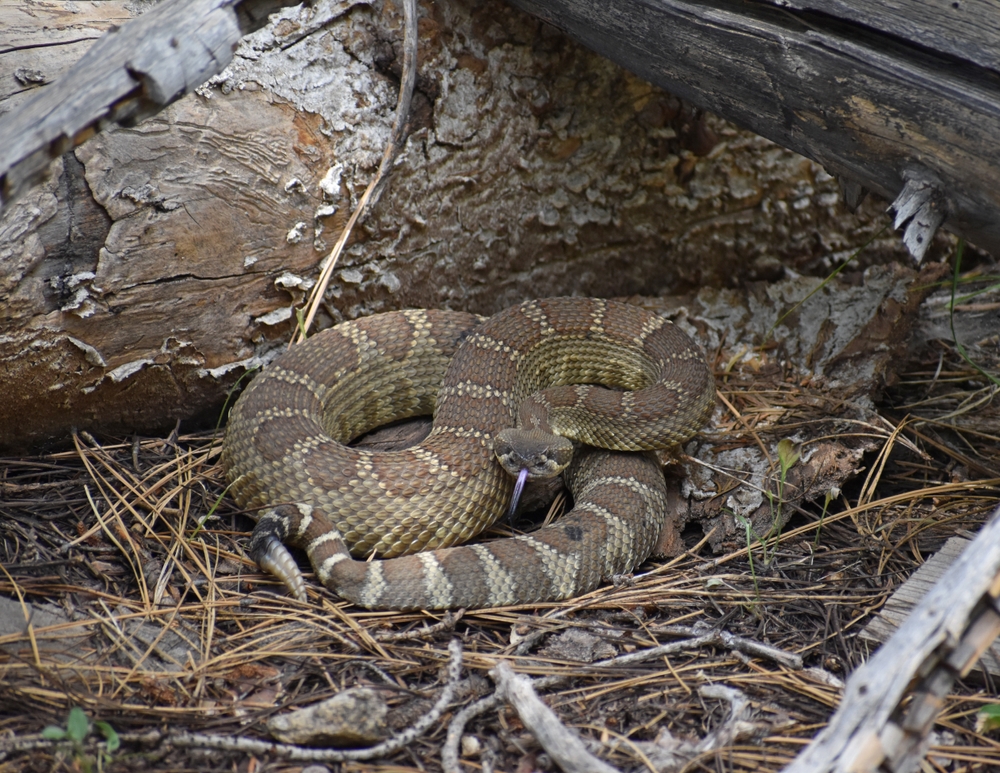
This rattlesnake species is native to the Pacific Northwest and parts of California, thriving in forests, grasslands, and even rocky coastal areas. Known for its adaptability, the Northern Pacific rattlesnake’s venom contains hemotoxins that can lead to pain and swelling. Its docile nature means it typically avoids confrontation, but accidental encounters can still result in bites that require prompt medical attention.
15. Dusky Pygmy Rattlesnake: A Stealthy Visitor

The dusky pygmy rattlesnake, found in the southeastern U.S., is a small but striking species known for its speckled gray and reddish patterns. It often lurks near water sources, blending into its surroundings with ease. Its venom isn’t deadly to humans but can cause severe discomfort and swelling. This snake’s size and subtle rattle make it easy to overlook, so staying alert is key in areas it inhabits.
